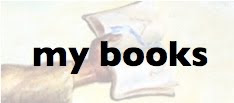This may be because we're all racist, or so some folks say. I do wonder at that, though. Racism requires intentionality, and there's little evidence that's the case here. Then there's "structural racism," which can be defined in a range of different ways, but tends to involve cultural assumptions that create bias against certain groups and for other groups.
Where I have some trouble is here: if we use the modern-era racial categories as a way to define human beings, the proportional allocation of individuals into those categories isn't itself racist. Meaning, simply, this: a non-racist culture in which certain groups comprise a larger portion of the population will...in the absence of bias...be more likely than not to have leaders who come from more well populated categories.
In other words, if your culture is majority "white," you will, in the absence of systemic racism, still likely have more white folk in leadership. Probabilistically speaking, it's not a sign that bigotry is a factor.
As a way of playing about with this idea, I took a twenty-sided die, one I'd used the last time I played role playing games with my sons. Then I took a look at the current demographic breakdown of the United States of America. If you roughly line up American racial/gender demography with the numbers one through twenty, you get the following:
1-6 White Male
7-12 White Female
13-14 Latino
15-16 Latina
17 Black Female
18 Black Male
19 Asian
20 Other
This is a clumsy simplification, of course, and one that doesn't represent the longer term dynamics of America's demographics, but it's as close as one can get to results that split the difference between the last census and where we're trending. Having laid out those parameters, I busted out my d20 and started rolling. There are four Democratic candidates with a shot at the nomination now, and so here are my first four rolls:
1 White Male
2 White Male
3 White Female
4 White Male
As it so happened, my random rolling yielded the exact current race/gender makeup of the four leading Democratic candidates. Does this represent systemic racism, or a "diversity problem?" I'm not sure how one could meaningfully argue that, given that the race/gender representation of my "white" folks category is slightly under where demographic data shows America falls. One could, of course, suggest that a completely race-blind and randomized selection process is racist, but...well...that'd be a little insane.
I kept rolling.
5 White Female
6 Black Female
7 White Female
8 Latino
9 White Female
10 White Male
11 White Female
12 White Female
13 White Male
14 Black Male
15 White Female
16 White Female
17 White Female
18 White Female
19 Latina
20 White Male
And with those twenty rolls, the spread bent towards Whitey. More female than male, as it so happened, but that was just a factor of randomness and a small sample size. "Asian" and "Other" never quite surfaced, but had I spent the entire afternoon tossing my icosahedron, I'm sure things would have evened out.
Because dice are absolutely fair and devoid of bias.
Looking at the breakdown of my rolls, an unbiased, representative, and "unproblematic" distribution of candidates might look like this:
There's a mixed distribution of gender and race, one that isn't too wildly far off from the actual demographics of American citizenry. If there were racial and gender bias in a culture or sub-culture, it would manifest as if being white gave you a significant advantage, that classic "plus 5" modifier. Do that kind of rolling and it would look more like this:
Here, there's a gender mix that would be near impossible to replicate with a d20, and a racial breakdown that would be only slightly less difficult. Clearly, something is skewing the results, making this second image radically unrepresentative at the national level. You want "problematic?" Well, here you go.
But when considering candidates for the presidency, "diversity" is an odd frameset. Because, ultimately, there's just one person you'll be voting for, and a single person definitively cannot be "diverse."
If we insist on valuing human beings by race and gender, and not by how their policy positions impact all citizens of every hue and gender, then we can't help but be disappointed when we equate presidential virtue with demographic categorization.









